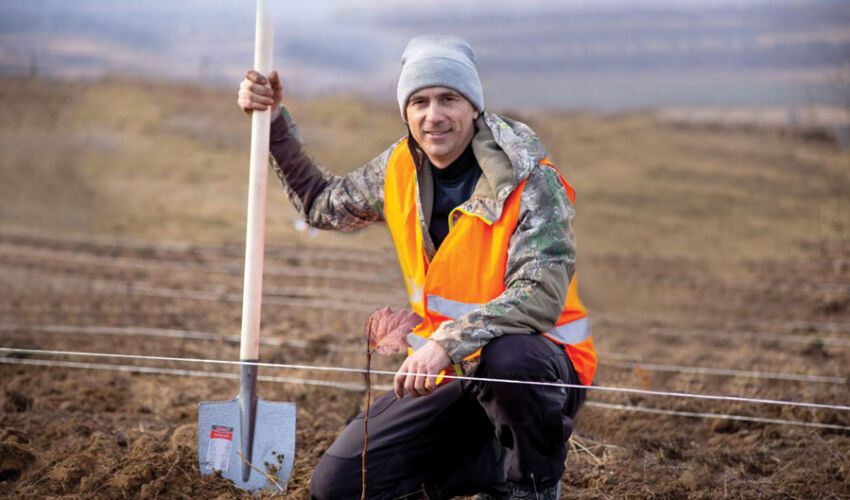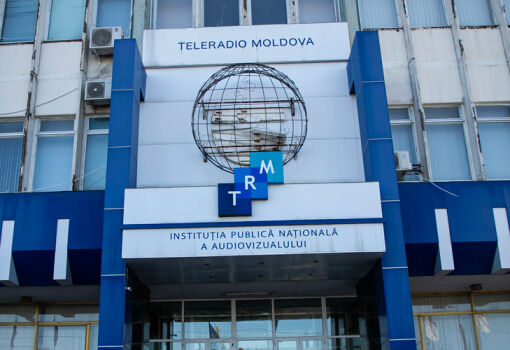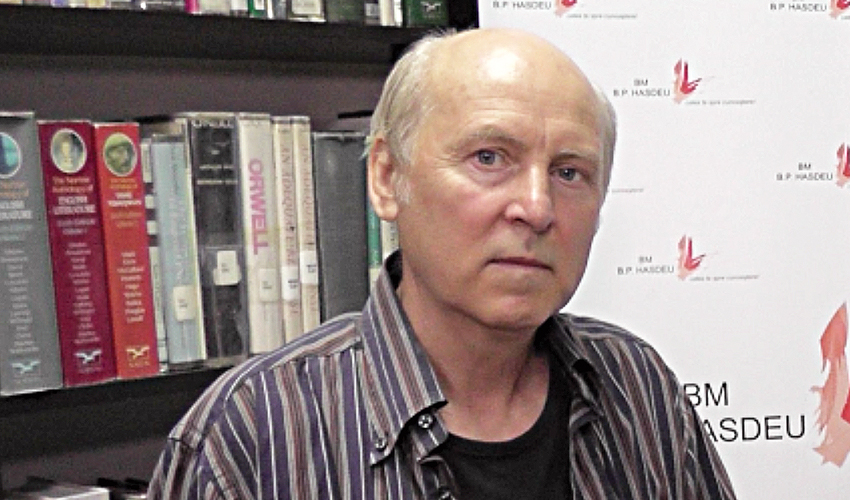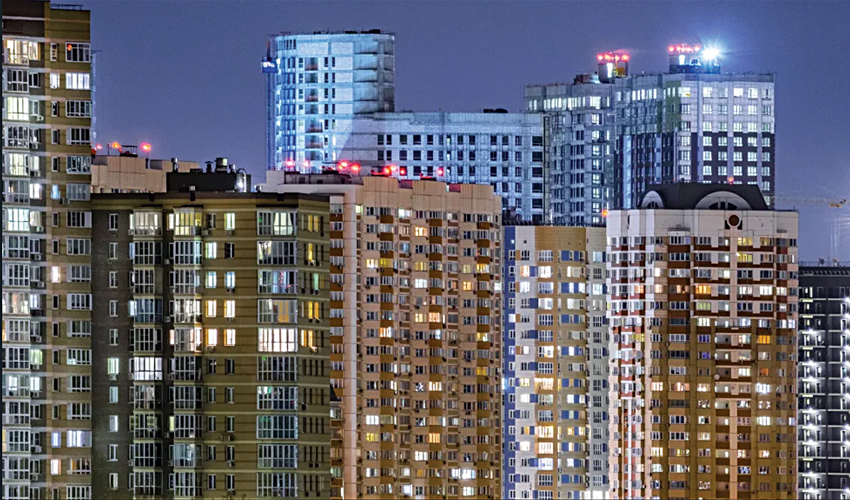
Yuriy Gumenyuk
LP: – According to the latest data, forests in Moldova cover 400 thousand hectares or about 11% of the country’s territory. How problematic is the situation?
– For a country with a moderate continental climate, the forest area should not be less than 20%. For example, in Romania it is 33%, in Germany, Italy and France – 32%, in Spain – 37%. In terms of forest cover, Moldova is almost on a par with Uganda, Uruguay and Mali. Even in Great Britain, where there are solid rocky islands, the forest area reaches 13%.
In our case, the main reason for the low forest cover is not soil erosion or deterioration of the quality of agricultural land. Our forest area is historically small but stable.
LP: – You were an entrepreneur far from forestry. Why did you become interested in it, and how did it all start?
– With the dream of planting a real, living, mixed forest – not a planting “for the report”, but an ecosystem. We, a team of like-minded people, found a 5 hectare plot near the village of Pokhrebya, which was allocated to us by the Mayor’s Office of Koshnitsa. The land was heavy – saline, carbonate, clayey, low in humus, overgrown with weeds. It was a former pasture that had turned into a wasteland. There was not enough money for planting, so funds were collected through crowdfunding and small donations, $10, 20 lei each. Thus, about 7 thousand euros were collected, which were not enough for equipment, seedlings, and manual labor. The total budget of the first project amounted to 30 thousand euros.
Looking back now, I realize that at that time we did not fully understand what we were doing. We just planted an oak tree because it was beautiful. But we didn’t analyze the soil, we didn’t take into account other factors. We were just lucky that the oak tree took root.
Forests don’t grow on their own. Forestry is an engineering science, it has its own norms, rules and formulas. A tree can grow on its own in a forest where there is forest soil, where the young trees are protected from the wind and receive moisture from the root system of other trees. Whereas planting annual seedlings in the field, on degraded soil, under the open sun and blown by all winds – it is absolutely not a natural process for nature.
LP: – They say that your seedlings take root by 90%. How do you manage it?
– Our average rooting rate is 85%. Everything starts with soil analysis. We drill to a depth of 30, 60 and 90 centimeters. Why so deep? Because trees already in the second year put down roots at 60 cm, and then at a meter. And if there is clay or carbonate below, the tree will not survive. We take at least six samples from each plot, because even on 5 hectares the conditions can vary greatly: in the lowlands there will be one thing, on the slope – another. Then we analyze the chemical composition, acidity, moisture capacity of the soil. Only then – the choice of species. The same oak does not grow everywhere: on limestone, for example, it will die. Lime, hornbeam or gleditsia take root there better.
We send all the analyses to the laboratory, after which our specialists interpret them. Based on the analysis, they can tell us whether, for example, ash, lime or red oak will grow here. Three people work with us on a permanent basis, and another seven are engaged as experts. Each afforestation site is accompanied by a 50-70 page project with soil analyses, schemes, formulas, and seedling care maps.
LP: – What happens after the forest is planted?
– Comprehensive care, without this the seedlings will not take root. We always proceed from the worst scenario, we imagine that there will be an abnormal drought, and we adjust everything for it. We use hydrogel – it increases the survival rate by 5-7%. Seaweed fertilizer – another 4-5%. Deep tillage increases the effect by up to 30%. We water, protect, fertilize in the right dose. All this together gives 80-90% survival rate even on difficult lands, unlike in state forestry farms, where the rate is 30%.
At the same time, we provide care for two years after planting. The first year – manual watering, weeding. The second year – control, shaping, possibly partial replanting. If the seedlings are not cared for, then nothing will survive. We learned a long time ago: 10% of the work is planting the forest, and 90% is caring for it.
LP: – How much does it cost to plant 1 hectare of forest?
– The price depends on the terrain, its density and other factors. If you do everything according to science, with care for 2 years, then on average – 10 thousand euros per hectare. This – taking into account the analysis, preparation, use of equipment, purchase of seedlings, salaries. There are areas where the price may be higher. For example, in Roshkan the plot had a strong slope: a tractor could not pass there, we had to reinforce it, make terraces – for the first time since the Soviet times. They found a mine and called the bomb squad. In the end, everything was redone, the trees were planted in the fall, and in the spring we took care of them. It is now a green, beautiful forest, but at what cost!
By the way, the Agency “Moldsilva” in its reports indicates the amount of planting in 6-7 thousand euros per hectare, but this is without taking into account the additional planting, amortization of machinery and other costs. As a result, their plantings are not cheaper than ours, but their survival rate, as I mentioned, is many times lower.
LP: – What kind of forests do you plant most often? And where do you get seedlings?
– We plant only mixed forests – at least 5-6 species on one plot. These are petiole oak, ash, linden, gleditsia, Japanese quince, mahalevka (cherry), and shrubs – silver elk, cotoneaster, rosehip, honeysuckle. Some of them fix nitrogen, others retain moisture, others are a food base for birds and small animals. We are creating a biocenosis. Mono plantations are a bygone age. Such forests die from pests and drought, while mixed forests live on.
As for suppliers, we work with private nurseries, which grow the necessary varieties under our order. We grow some species ourselves.
The price of seedlings varies from 3.6 to 18 lei, but on average it costs 7-8 lei to buy one plant.
We mainly focus on the open root system, seedlings with a closed root system (grown in a container) do not take root. We conducted an experiment: we planted a thousand seedlings with a closed system – 90% died. In Romania they are grown under the sun, but in our country they are grown in the shade, and the seedlings are not hardened.
So there is no mass production of quality planting material with a closed system in Moldova yet.
LP: – How do you cooperate with “Moldsilva” in this business?
– Moldsilva” Agency has 24 leskhozes, each of which earns mainly on the sale of timber. That is, our leskhozes are not about increasing the forest area, but rather about timber harvesting. All 24 enterprises live at the expense of logging, the afforestation program is secondary for them. Leskhozes sell oak, ash, acacia as firewood and furniture raw materials. About 70% of all trees planted by Moldsilva today are acacia.
LP: – Is that why there are so many acacia trees in Moldova?
– Yes, it is an unpretentious plant that requires no maintenance and grows quickly. They plant it to report on hectares, without thinking about biodiversity. Cutting down valuable species and planting acacia is a crime against the ecosystem. We raised this issue at the recent Forest Forum, but the response so far has been weak.
LP: – Do you have mechanical planting or do you plant forests manually?
– In Moldova, almost everything is planted by hand, although this is yesterday. We use a planting machine that replaces 10 people. Mechanization means speed, quality, depth and economy. We switched to it two years ago. In the future we want to introduce an automatic irrigation system, especially for the south of the country.
LP: – How do you get land for planting forests?
– As a rule, it is state land. It is easier to negotiate with local mayoralties, they have a lot of ownerless, degraded wastelands. We sign an agreement with the right to take care of the planting for 5 years. The document stipulates that the land will be transferred to the state forest fund.
I would like to note that we carefully choose with whom to work – not only the land is important, but also the person. The mayor must be ready to defend his forest, even if he is pressured through other instances. There were cases when the mayor was approached with a proposal to open a quarry on the site of a new planting, he refused and defended the forest. Similar examples were in Selemet village and in Glodeni.
This is why we choose our partners with great care in such an endeavor.
LP: – How do you make money from such a hobby? Where does the money for the forest come from?
– We are a non-profit organization, so 80% of the money we receive goes to planting. The rest is taken up by administrative costs, purchase of equipment, etc. We mainly attract grants: we worked with GEF, with the Bulgarian Embassy, with European funds. We have a good reputation: we don’t do glossy PR, we do systematic work.
LP: – How many people are in your team?
– There are three permanent members: me, my wife Galina (LP: TV journalist Galina Popova) and the project manager. Plus temporary employees, assistants. All the functions are clearly divided: Galia is the brain, she is in charge of negotiations, grants, logistics. I am responsible for technology, travel, implementation. The designer is the engineer, the draftsman, he is responsible for all the documentation. We don’t just “plant trees”, we design ecosystems. We have our own database, maps of all the sites, hundreds of photos.
By the way, we don’t work with volunteers. We’ve been through this: 500 people come for selfies, trample the soil, plant something. After them all the work is redone again. The forest is not a party. We are for professionalism and results, not photo shoots.
LP: – What are you planning this year? When is the new planting?
– We will plant a new forest in the fall, and in the meantime we are working on the maintenance of the old plots. In July we will try leaf fertilization from drones. This is a novelty for us, although it is already used in Romania. We are always experimenting: it is important for us not just to plant, but to understand how to do it better, how to save money, how to scale up.
We want to launch an educational platform so that every mayor knows how to plant a village properly. And that this is not just one day a year, but a constant work. The result is very important for us. Because the forest is not a project, it is a matter of life. And conscience.













